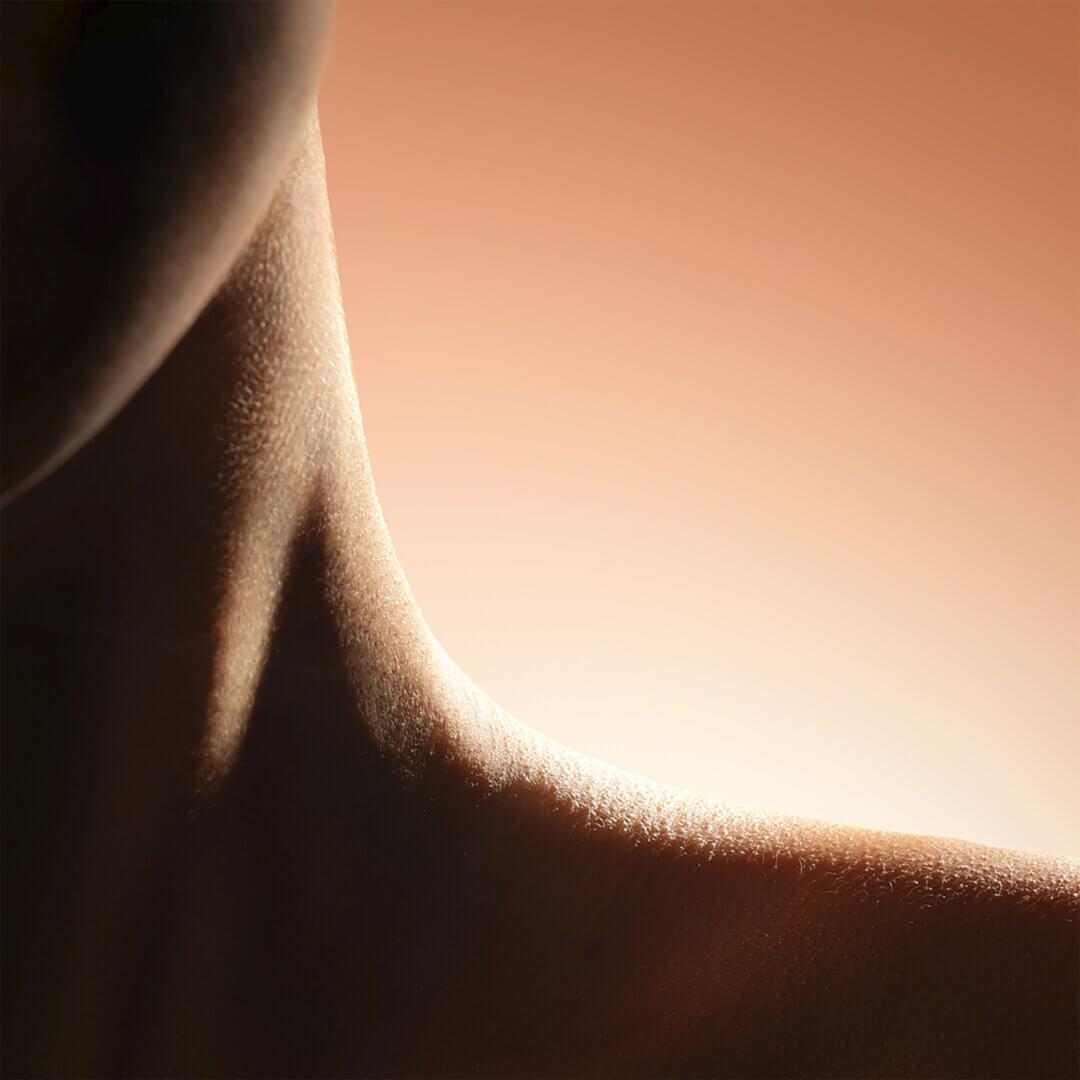
Understanding the exposome and its effects on our skin
October 31, 2024 - Tutorials and advice
Our skin is actually our largest organ and the human body’s first line of defence against external stresses. It therefore reflects the various environmental, dietary, and social factors that affect us on a daily basis. Pollution, UV radiation, chemicals, pesticides, endocrine disruptors, smoking, and stress can all affect the structure of our skin in different ways.
For our purposes, the exposome refers to all the factors associated with skin ageing, and it is important to understand them in order to develop a personalised skincare routine.
In this article, we’re going to look at how the concept of the exposome was developed and why it’s important to properly understand its constituent parts. You’ll also find out what to pay special attention to in “your” exposome, and which of our treatments are best suited to your needs.
Overview of the exposome
-
This concept covers all the factors to which an individual is exposed in the course of his or her life (chemical environment, medical treatments, lifestyle, diet, etc.).
-
It is very complicated to understand a person’s exposome as a whole.
-
Researchers therefore generally focus on one aspect in particular. Laboratoires FILORGA focuses on the skin exposome.
-
Oxidative stress reflects the cumulative effects of the various elements of the exposome.
Definition of the exposome: a recent concept.
We’ve known for a long time that the environment we live in plays a key role in our health. Many chronic diseases are attributable to environmental factors, as are respiratory ailments and, of course, skin problems.
As scientists gradually learned more about these factors, they realised that if they were to understand their impact on human health, they needed to study them as a whole rather than looking at each one in isolation.
And so in 2005, Dr Christopher Wild, who is now Director of the World Health Organisation’s International Agency for Research on Cancer, mapped out the foundations of what we now call the exposome. In an article published in the medical journal Cancer Epidemiology, Biomarkers & Prevention, Dr Wild gave an innovative definition of the exposome as “the sum total of all exposures to which an individual is subjected from conception to death”. Dr Wild demonstrated that the exposome encompasses all the different environmental factors to which a person is exposed throughout their life, such as chemical, microbiological, physical, recreational, medicinal, nutritional, and infectious factors, as well as those related to their lifestyle.
Exposome and global health
In the years since Christopher Wild’s publication, the concept of the exposome has evolved. Some researchers now distinguish between three complementary types, depending on the nature of the exposure:
-
The specific external exposome: this is measured from the immediate local environment and includes lifestyle, diet, radiation and pollution. It includes all external exposures such as chemical agents, pollutants, pharmaceutical products, as well as injuries and infections contracted during life.
-
The general external exposome: this includes the psychological, societal and economic domains, representing non-specific exposures such as social status, level of education, climate, psychological stress and location.
-
The internal exposome: measured from within the individual, this concerns internal exposures linked to metabolism, endogenous molecular processes, toxicology, the inflammatory response, ageing or the influence of microbial flora. This constitutes the internal chemical environment specific to each individual.
All three play a part in a person’s overall health, to varying degrees depending on the individual.
More than one exposome?
Describing an exposome in its entirety is not a simple task. It involves:
-
Gathering an incalculable amount of data on a wide range of exposures (chemical, physical, biological, psychological, etc.)
-
Taking into account a number of different timeframes (early or late exposure, short-term or repeated exposure, chronic exposure, etc.).
-
To correlate these data with the genetics and genome of the individuals and populations studied.
Exposome research, which necessitates a multidisciplinary stance, still requires a great deal of work in terms of methodological standardisation, a task that has not yet been accomplished.
This is why researchers are now focusing on more narrowly defined areas of the exposome. These vary according to different scientific disciplines and public health areas of study, and they can also overlap. For example, food can simultaneously be part of:
-
The exposome associated with metabolic diseases.
-
The exposome associated with pregnant women.
-
The exposome associated with determinants of life expectancy,
-
…and more.
Here at FILORGA, our focus is on the exposome that affects our skin. Let’s look at what it consists of and the key points to bear in mind.
Know your exposome to better protect your skin.
To effectively combat skin ageing, it is important to properly understand how much we are exposed on a daily basis to the various negative factors of the exposome.
This is precisely why our beauty consultants offer a consultation to our customers. This involves asking them questions about their lifestyle: sun exposure, pollution, smoking, stress, diet, screen time, regular travel, lack of sleep, sport, etc. Armed with this information, they can then suggest a skincare routine suited to individual needs.
Here are some of the most common tips.
Protect yourself from oxidative stress.
Oxidative stress is one of the main causes of skin ageing. It also reflects the cumulative impact of various components of the exposome. All of the advice we give our customers on how to reduce the negative effects of their exposome is geared towards reducing oxidative stress as much as possible.
Protect your skin from the sun.
UV radiation accelerates the degradation of proteins that are essential for the skin, such as elastin and collagen, which in turn hastens skin ageing. While moderate unprotected exposure to the sun helps the body to synthesise vitamin D (which is especially important for bone health), FILORGA’s experts recommend that customers exercise caution when it comes to exposure to UV radiation. They recommend using sun cream every day and avoiding exposure to the sun during peak sunshine hours.
A variety of other situations are also high-risk, although we might not necessarily realise it. People often associate sun exposure with leisure activities, but our everyday and working lives are constantly severely testing our skin, and it must be protected. For example:
-
Outdoor work: jobs in construction, gardening, agriculture, etc. are typical examples, but even someone working at a desk with the windows open in summer can overexpose themselves to the sun.
-
Travelling on foot, by bike, or by car — we generally wouldn’t think to protect ourselves in these situations, as they are often short outings within our town or city. But just like with outdoor work, the repetition of such exposure can have a negative impact on the skin. It’s also worth knowing that car windows, even tinted ones, don’t fully filter out UV radiation. So be careful if you’re spending a lot of time driving.
-
Having lunch or coffee on a bar or café terrace — while this may be highly pleasant on a nice, sunny day, your skin is still at risk.

Avoid tobacco.
Smoking reduces endogenous antioxidant numbers (those produced by our bodies) as well as the effect of antioxidants present in our food (such as vitamin C). This obviously makes combatting oxidative stress even more difficult.
Avoid polluted areas.
Damage to the epidermis can be exacerbated by atmospheric pollution. Pollutants interact with UV radiation to form ozone. And although ozone can’t penetrate the epidermis, it does cause oxidative stress by altering the lipids in the upper layers of the skin.
To combat the harmful effects of exhaust gases and industrial fumes on the skin, Laboratoires Filorga’s experts specifically developed OXYGEN-GLOW CC CREAM, which provides triple protection against pollution, UV radiation, and blue light from screens. You should also properly cleanse your skin in the evenings to remove the pollution particles that can accumulate over the course of the day.
Get enough sleep.
Getting a good night’s sleep is the most healing “activity” there is. Unfortunately, our modern lifestyles mean that lack of sleep is all too common, and frequent sleepless nights damage the skin’s radiance and tone. Our NCEF-NIGHT MASK combines our star ingredient, NCEF [New Cellular Encapsulated Factors], and Persian silk tree extract and is the ideal solution for combatting those sleepless nights. As long as they don’t happen too often!